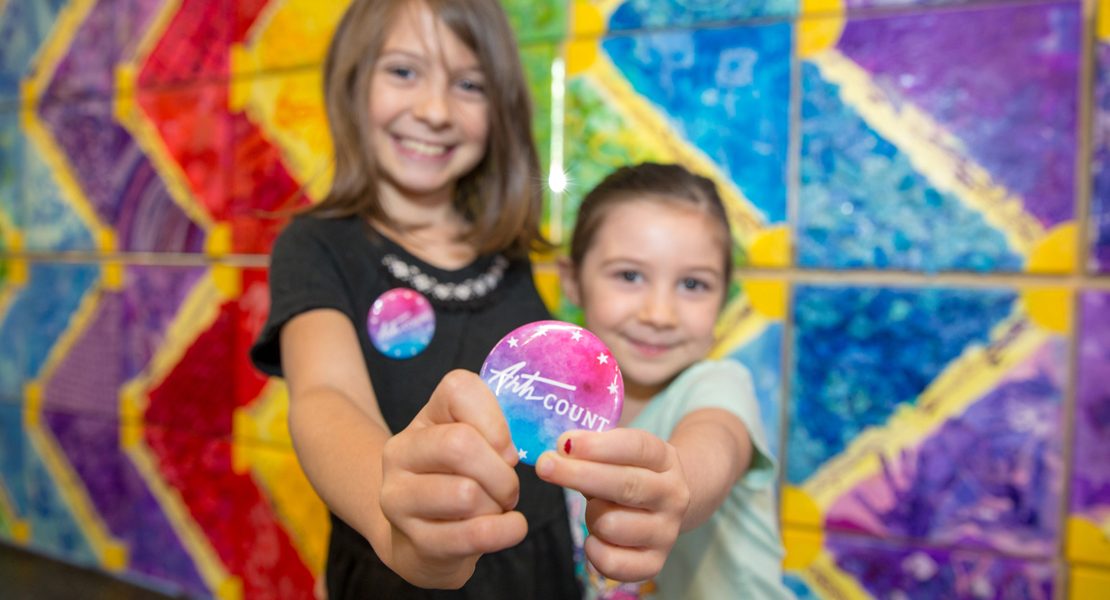Lehigh Valley Arts Council

The arts serve a spiritual need for the community,” says Randall Forte, Lehigh Valley Arts Council’s executive director.
What began in 1989 as a grassroots organizational effort by the heads of a number of arts organizations and individuals with a strong belief in the importance of art in the community now boasts more than 100 arts and cultural organization members, along with individual and business members, a diverse board of directors, and a small professional staff. Member organizations can list their events in the bimonthly arts calendar, sell tickets to their events through an online box office, be listed in an online arts directory, and participate in various networking activities.
The council also offers educational programs, such as the annual Young at Art expo, a one-stop shop for kids to check out, participate in, and view a variety of arts. It serves as the local administrator of the Pennsylvania Partners in the Arts grant program, reviewing applications and awarding funding from the Pennsylvania Council on the Arts to artists whose projects engage and involve the community; in the current grant year, it awarded just under $40,000 in grants to 26 artists. The council also conducts and disseminates research into the contributions the arts make to the community.
“My first priority when I became executive director was to work with the board to establish a new mission statement and try not to be all things to all people, but to select a couple of priority programs and services that we could build upon,” says Forte, who became executive director in 1999, after serving on the board for several years. “The economic impact study of the arts was one of them. It brought everybody together to make the case that the arts are valuable to local economy.”
The study, which the council conducts every five years, showed a steady increase in both attendance and income until 2017, the latest year it was conducted, when it showed a decrease in attendance of about 1.4 million and a decrease in income from $208 million to $186 million. The decrease is not the result of a decrease in the number of cultural events in the area; in fact, it’s just the opposite.
“There’s been an increase in competition,” Forte says, adding that the nonprofit arts and entertainment organizations are now competing with the offerings of educational institutions such as Lehigh University’s Zoellner Arts Center and Lafayette College’s Williams Center; for-profit arts organizations that bring in outside performers, such as Wind Creek Casino Event Center; and sporting organizations such as the IronPigs and the Lehigh Valley Phantoms. “The area has had a tremendous growth in the opportunities for people to spend disposable income,” he says.
Forte notes that while the small and mid-sized producing organizations and the larger presenting organizations are combining to offer patrons more variety than ever, their effects on the community differ. The producing organizations “work with local talent and make use of local business vendors,” he says, adding that “the money stays in the communities.”
Forte also notes that many organizations have built or expanded facilities in their local communities, often at great cost, without considering the effect on the region as a whole.“We need to try to strike a balance and get people to work together,” Forte says, adding that each type of organization brings something unique to the table. “Having a regional cultural plan would be helpful so we look at what we have and what we need.”
ARTS AND ACCESS ALWAYS
One of the Lehigh Valley Arts Council’s newest programs, Arts and Access Always, is designed to provide people with disabilities greater access to the arts.
The program, which began in 2014 as a yearlong celebration of the 20th anniversary of the Americans with Disabilities Act, offers matching grants for organizations seeking to accommodate an underserved population in its audience, to contract with a disabled artist for a public performance and to teach an artistic practice culminating in a public performance or exhibition by a group of people with disabilities. Among the events the program has supported are public performances in American Sign Language, audio descriptions of the visual arts, and dance programs for those with physical disabilities.
“Greater access empowers everybody and makes the arts more relevant to the community they’re serving as well,” says Forte.
LEHIGH VALLEY ARTS COUNCIL
840 HAMILTON ST # 201
ALLENTOWN
610.437.5915
LVARTSCOUNCIL.ORG














